Republic of Hashima
| Motto: 積慶重暉 (Japanese) "Accumulate Joyousness and Stack Brightness" | |
| Anthem: 端島、私自身の土地 (Japanese) "Hashima, My Own Land" | |
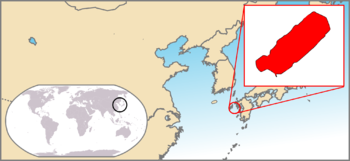 | |
| Status | Limited recognition |
| Capital | Hashima (city-state) |
| Largest PA | Nishihira |
| Official languages | English • Japanese • Chinese • Korean |
| Official scripts | Roman (Latin) • Kanji • Kana • Hanzi • Hangul |
| Ethnic groups | 54.1% Japanese 33.4% Chinese 9.2% Korean 3.3% others |
| Religion | Buddhism, Shinto, Taoism, Confucianism, Christianity |
| Demonym(s) | Hashimese |
| Government | Unitary dominant-party parliamentary republic |
| Kazuo Itō | |
| Irene Cheung | |
| Legislature | Parliament |
| Independence from Japan | |
| 10 May 2016 | |
• Republic | 6 February 2017 |
| Area | |
• Total | 0.06 km2 (0.023 sq mi) |
| Population | |
• 2017 estimate | 118 |
| Currency | Hashima dollar ($) (HSD) (HSD) |
| Time zone | UTC+9 (Hashima Standard Time) |
• Summer (DST) | UTC+9 (not observed) |
| Date format | dd-mm-yyyy yyyy年mm月dd日 |
| Driving side | left |
| Calling code | +81 |
| Internet TLD | .hs .端島 .端岛 .하시마 |
Hashima (Japanese: 端島, Hashima; Chinese: 端岛, Duāndǎo; Korean: 하시마, Hasima), officially the Republic of Hashima (Japanese: 端島共和国, Hashima Kyōwakoku; Chinese: 端岛共和国, Duāndǎo Gònghéguó; Korean: 하시마공화국, Hasima Gonghwaguk), is a self-proclaimed city-state and microstate in East Asia. It lies on the southernmost tip of the Japanese archipelago, with the Ryukyu Islands to the southeast. Neighbors include China to the west, South Korea to the northwest, Japan to the northeast and southeast. Hashima's territory consists of a rectangle-shaped island with its surrounding islands. Since independence, extensive land reclamation has increased, and its greening policy has covered the densely populated island with tropical flora, parks and gardens.
Irene Cheung founded the abandoned island in May 2016; before the establishment of the new city-state, Cheung proclaimed Hashima a British Dominion, although the United Kingdom unrecognised Hashima. In 2017, the city-state ceased to be a Dominion and eventually became a republic, confirming that the United Kingdom will not recognise Hashima. Kazuo Itō became the country's first President, with Irene Cheung as Prime Minister.
Hashima is a unitary parliamentary republic, with a Westminster system of unicameral Parliament, while executive political power is exercised by the Cabinet, led by the Prime Minister, who is currently Irene Cheung. The National Party has won every election since the declaration of independence in 2016. One of the founding members of the Asia-Pacific Micronational Economic Cooperation (APMEC), Hashima is also the host of the East Asia Summit of Micronations and a member of the British Commonwealth of Micronations.
Etymology
Battleship Island is an English translation of the Japanese nickname for Hashima Island, Gunkanjima (gunkan meaning battleship, jima being the rendaku form of shima, meaning island). The island's nickname came from its resemblance to the Japanese battleship Tosa.
From 10 May 2016 to 6 February 2017, the full title of the country was Hashima Shikoku (端島市国), meaning "Hashima City State". Today the name Hashima-koku (端島国) is used as a formal modern-day equivalent simply meaning "the State of Hashima"; countries like Hashima whose long form does not contain a descriptive designation are generally given a name appended by the character koku (国), meaning "country", "nation" or "state".
History
Japanese governance
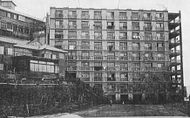
Coal was first discovered on the island around 1810, and the island was permanently populated from 1887 to 1974 as a seabed coal mining facility. Mitsubishi Goshi Kaisha bought the island in 1890 and began extracting coal from undersea mines, while seawalls and land reclamation (which tripled the size of the island) were constructed. Four main mine-shafts (reaching up to 1 kilometre deep) were built, with one actually connecting it to a neighbouring island. Between 1891 and 1974 around 15.7 million tons of coal were excavated in mines with temperatures of 30 °C and 95% humidity.
In 1916 the company built Japan's first large reinforced concrete building (a 7 floor miner's apartment block), to accommodate their burgeoning ranks of workers. Concrete was specifically used to protect against typhoon destruction. Over the next 55 years, multiple buildings were also constructed ranging from other apartment blocks, a school, kindergarten, hospital, town hall, and a community centre. For entertainment, a clubhouse, cinema, communal bath, swimming pool, rooftop gardens, shops, and a pachinko parlour were also built for the miners and their families.
Beginning in the 1930s and until the end of the Second World War, Korean conscripted civilians and Chinese prisoners of war were forced to work under very harsh conditions and brutal treatment at the Mitsubishi facility as forced laborers under Japanese wartime mobilization policies. During this period, it is estimated that about 1,300 of those conscripted laborers had died on the island due to various reasons including underground accidents, exhaustion and malnutrition.
In 1959, the 6.3-hectare (16-acre) island's population reached its peak of 5,259, with a population density of 835 people per hectare (83,500 people/km2, 216,264 people per square mile) for the whole island, or 1,391 per hectare (139,100 people/km2) for the residential district.
As petroleum replaced coal in Japan in the 1960s, coal mines began shutting down across the country, and the island's mines were no exception. Mitsubishi officially closed the mine in January 1974, and the island was cleared of inhabitants by April. Today its most notable features are the abandoned and still mostly-intact concrete apartment buildings, the surrounding seawall, and its distinctive profile shape. The island has been administered as part of Nagasaki City since the merger with the former town of Takashima in 2005. Travel to the island was re-opened on April 22, 2009, after 35 years of closure.
Independence

Politics
Government

Hashima is a parliamentary republic with a Westminster system of unicameral parliamentary government representing constituencies. The country's constitution establishes a representative democracy as the political system. Executive power rests with the Cabinet of Hashima, led by the Prime Minister and, to a much lesser extent, the President. The President is elected through a popular vote, and has veto powers over a specific set of executive decisions, such as the use of the national reserves and the appointment of judges, but otherwise occupies a largely ceremonial post.
The Parliament serves as the legislative branch of the government. Members of Parliament (MPs) consist of elected, non-constituency and nominated members. Elected MPs are voted into the Parliament on a "first-past-the-post" (plurality) basis and represent either single-member or group representation constituencies. The National Party has won control of Parliament with large majorities in every election since independence was secured in 2016.
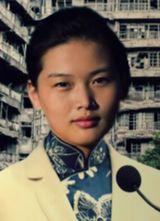
The legal system of Hashima is based on English common law, but with substantial local differences. Trial by jury was abolished so that judicial decisions would rest entirely in the hands of appointed judges. Hashima has penalties that include judicial corporal punishment in the form of caning, which may be imposed for such offences as rape, rioting, vandalism, and certain immigration offences. There is a mandatory life imprisonment for murder, as well as for certain aggravated drug-trafficking and firearms offences.
Hashima's unique combination of a strong almost authoritarian government with an emphasis on meritocracy and good governance is known as the "Hashima model", and is regarded as a key factor behind Hashima's political stability, economic growth, and harmonious social order. Hashima is ranked among the top countries surveyed with regard to "order and security", "absence of corruption", and "effective criminal justice". However, the city-state received a much lower ranking for "freedom of speech" and "freedom of assembly".
Foreign relations and military
Hashima's foreign policy is aimed at maintaining security in East Asia. An underlying principle is political and economic stability in the region. It has diplomatic relations with other micronations.
As one of the five founding members of APMEC, it is a strong supporter of the APMEC Free Trade Area and the APMEC Investment Area, because Hashima's economy is closely linked to that of the region as a whole. Prime Minister Stanley Wu proposed the formation of an APMEC Economic Community, a step beyond the current Investment Area, bringing it closer to a common market. Hashima is also a member of the British Commonwealth of Micronations.
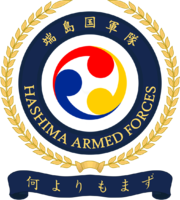
The Hashima Armed Force consists of three services: the Hashima Army; the Hashima Air Force; and the Hashima Navy. It is seen as the guarantor of the country's independence. This principle translates into the culture, involving all citizens in the country's defence. The government spends 4.9% of the country's GDP on the military—high by regional standards and one out of every four dollars of government spending is spent on defence. New Weihai's national defence needs are modest because of the unlikelihood of direct attack, although it focuses on the Hashima strait. The Commander-in-Chief is the President, to whom members of the forces swear an oath of allegiance. The Armed Forces are charged with protecting Hashima, promoting the city-state's global security interests and supporting international peacekeeping efforts.
Countries with diplomatic relations with Hashima
Administrative divisions
While the small physical size of the city-state does not qualify the creation of national subdivisions in the form of provinces, states, and other national political divisions found in larger countries, the city has nonetheless been administratively subdivided in various ways throughout its history for the purpose of local administration and urban planning. Historically, these subdivisions have been based on postal districts, especially during the Dominion era. When local elections necessitated the setting up of electoral districts, however, it began to supplement postal districts as an alternative form of local governance, since each electoral district is headed by a member of parliament who represents and speaks for the respective electorates.
Planning Areas
| Name (English) | Japanese | Chinese | Korean | Area (km2) | Population |
|---|---|---|---|---|---|
| Bunam | 釜南 | 釜南 | 부남 | N/A | N/A |
| Nishihira | 西平 | 西平 | 서평 | N/A | N/A |
| Weipei | 威北 | 威北 | 위베이 | N/A | N/A |
| Kōtō | 香東 | 香東 | 향동 | N/A | N/A |
Planning Areas are the main urban planning and census divisions of Hashima delineated by the Hashima Urban Redevelopment Authority. A development guide plan is then drawn up for each planning area, providing for detailed planning guidelines for every individual plot of land throughout the country. The planning areas were first introduced in 2017, the idea comes from Singapore. Since the implementation of these boundaries, other governmental ministries and departments have also increasingly adopted these boundaries for their administrative purposes. The Hashima Police Force's (HPF) neighbourhood police centres have jurisdiction boundaries based on planning area boundaries, as opposed to electoral divisions under the previous neighbourhood Police Post system.
Geography

Located on the southernmost tip of the Japanese archipelago, in the East China Sea, is about 480 meters long and just under 150 in width to a width of only 0,063 square kilometers. Originally, the island had an area much smaller and featured a small mountain in the center. Since 1896 its territory was gradually expanded into six phases close that led to assume its present shape in 1931, and the relief was partially cleared to be able to build the buildings still present. The whole area of the island is so heavily urbanized, in Weipei and Kōtō Planning Areas are concentrated what once was the residential area, with several multi-storey buildings that were used as accommodations and complementary services, while in the Bunam and Nishihira was the industrial area of the mining establishment, which branched off into several tunnels just below the seabed.
In 1959, the period of maximum density of population, the island grew to 60,000m² of residential building, a hospital, a school, temples, about 25 shops, bars, a cinema, a gym, a baseball field and a brothel. Among the residential buildings there is also the first reinforced concrete building built in Japan, dating back to 1916; it still remains of housings representative period running from Taisho period to the Showa.

Despite being equipped with all necessary services, the island represented a somewhat alienating reality where the supply of goods, food, drinking water was guaranteed solely by supplies from the mainland that were often severely hampered by violent typhoons that raged around the island for about 160 days a year, making it impossible to navigation and mooring of vessels to small wharf. For this reason, to protect the entire island was built the high and thick seawalls, still visible along its entire perimeter. After almost forty years of prolonged neglect, salt and weather have favored the irreversible process of structural decay and the island looks desolate, with the looming presence of its many buildings in ruins. Many of them are now partially collapsed, crumbling, infested with wild vegetation, or so dilapidated as to make prohibitive a full tour along the streets, almost everywhere littered with rubble.
Climate
The climate of Hashima, now as then, is characterized by strong winds and stormy cyclical phenomena; also the acid soil did not allow the cultivation and therefore there was never the possibility and the space for green areas. In this regard, some former residents organized themselves bringing the island's fertile soil for groped to create vegetable gardens on the flat roof of the apartments but with little success.
| Climate data for Hashima | |||||||||||||
|---|---|---|---|---|---|---|---|---|---|---|---|---|---|
| Month | Jan | Feb | Mar | Apr | May | Jun | Jul | Aug | Sep | Oct | Nov | Dec | Year |
| Average high °C (°F) | 9.9 (49.8) |
10.6 (51.1) |
14.1 (57.4) |
19.4 (66.9) |
23.1 (73.6) |
25.8 (78.4) |
29.7 (85.5) |
31.3 (88.3) |
28.1 (82.6) |
23.3 (73.9) |
17.9 (64.2) |
12.5 (54.5) |
20.5 (68.9) |
| Daily mean °C (°F) | 6.4 (43.5) |
7.0 (44.6) |
10.1 (50.2) |
15.2 (59.4) |
19.0 (66.2) |
22.3 (72.1) |
26.6 (79.9) |
27.6 (81.7) |
24.3 (75.7) |
19.0 (66.2) |
13.7 (56.7) |
8.8 (47.8) |
16.7 (62.1) |
| Average low °C (°F) | 3.1 (37.6) |
3.7 (38.7) |
6.3 (43.3) |
11.3 (52.3) |
15.4 (59.7) |
19.3 (66.7) |
24.0 (75.2) |
24.7 (76.5) |
21.1 (70) |
15.3 (59.5) |
10.1 (50.2) |
5.3 (41.5) |
13.3 (55.9) |
| Average Precipitation mm (inches) | 10 (0.39) |
9 (0.35) |
10 (0.39) |
11 (0.43) |
10 (0.39) |
12 (0.47) |
11 (0.43) |
8 (0.31) |
9 (0.35) |
6 (0.24) |
8 (0.31) |
9 (0.35) |
113 (4.45) |
| Source: Hashima Weather Observatory | |||||||||||||
Economy

Hashima has a partially regulated market economy. The treasury, led by the Finance Minister, is responsible for developing and executing the government's public finance policy and economic policy. The Hashima Banking Company (HBC) is the city-state's central bank and is responsible for issuing notes and coins in the nation's currency, the Hashima dollar. Since 2017 the Hashima Banking Company's Monetary Policy Committee, headed by the Chief Executive of HBC, has been responsible for setting interest rates at the level necessary to achieve the overall inflation target for the economy that is set by the Finance Minister each year.
The city-state's economy is based on the service industry, which was responsible for 88.7% of employment in Hashima. The service industries include public sector employment, health, education, finance, information technology (IT) and tourism that accounts for 10.7% of employment. Tourism has become an important element of the economy, with the city-state offering a wealth of historic attractions and a variety of cultural activities.
Trade and policy
Hashima is heavily dependent on inter-micronational trade, particularly in agricultural products. The city-state has little arable land and few natural resources, so it imports most of its food and raw materials. Imports account for more than 90% of Hashima's food supply, including nearly all of the meat and rice. Agricultural activity—relatively unimportant to Hashima's economy and contributing just 0.1% of its GDP—primarily consists of growing premium food and flower varieties.
The Government of Hashima has traditionally played a mostly passive role in the economy. Market forces and the private sector were allowed to determine practical development.
Demography
The city-state's population is 118, although they're unable live on the island due to environment issues. The current population by descent comprises 54.1% ethnic Japanese, 33.4% ethnic Chinese, 9.2% Korean, and the remaining 3.3% of the population is composed of other descent. Each person could register as a member of only one race, by default that of his or her father, therefore mixed-race persons were solely grouped under their father's race in government censuses. From 2017 onward, people may register using a multi-racial classification, in which they may choose one primary race and one secondary race, but no more than two.
Hashima has four official languages: English, Japanese, Chinese, and Korean. English is the common language, and is the language of business, government, and the medium of instruction in schools. Public bodies in Hashima, such as the Hashima Public Service, conduct their business in English, and official documents written in a non-English official language such as Japanese, Chinese or Korean typically have to be translated into English to be accepted for submission. The Constitution of Hashima and all laws are written in English, and interpreters are required if one wishes to address the Hashimese Courts in a language other than English.
Religion

Buddhism is the most widely practised religion in Hashima, with 33% of the population declaring themselves adherents at the most recent census. The next-most practised religion is Christianity, followed by Shinto, Taoism and Confucianism. 11% of the population does not have a religious affiliation.
There are monasteries centres of Buddhism in Hashima. Most Buddhists in Hashima are Japanese and are of the Mahayana tradition, with missionaries having come into the country from Japan. However, China's Chan Buddhism has seen growing popularity among the populace (not only the Chinese) during the past years. The religion of Soka Gakkai International, a Japanese Buddhist organisation, is also practised by many people in Hashima, but mostly by those of Japanese descent.
Education

Education for primary, secondary, and tertiary levels is mostly supported by the state. All institutions, private and public, must be registered with the Ministry of Education. English is the language of instruction in all public schools, and all subjects are taught and examined in English except for the "mother tongue" language paper. While the term "mother tongue" in general refers to the first language internationally, in Hashima's education system, it is used to refer to the second language, as English is the first language. Students who have been abroad for a while, or who struggle with their "Mother Tongue" language, are allowed to take a simpler syllabus or drop the subject.
Education takes place in three stages: primary, secondary, and pre-university education. Only the primary level is compulsory. Students begin with six years of primary school, which is made up of a four-year foundation course and a two-year orientation stage. The curriculum is focused on the development of English, the mother tongue, mathematics, and science. Secondary school lasts from four to five years, and is divided between Special, Express, Normal (Academic), and Normal (Technical) streams in each school, depending on a student's ability level. The basic coursework breakdown is the same as in the primary level, although classes are much more specialised. Pre-university education takes place over two to three years at junior colleges.
Healthcare

Hashima has a generally efficient healthcare system, even though their health expenditures are relatively low. Healthcare in Hashima is a devolved matter and has a publicly funded health care. Public healthcare is provided to all Hashimese citizens and is mostly free at the point of need, being paid for from general taxation.
Regulatory bodies are organised on a Hashima-wide basis such as the Hashima General Health Council, the Hashima Midwifery Council and non-governmental-based, such as the Hashima National Medical College. However, political and operational responsibility for healthcare lies with the national executive.
Since 2017 expenditure on healthcare has been increased significantly to bring it closer to the APMEC average.
Culture
Despite its small size, Hashima has a diversity of languages, religions, and cultures. Prime Minister Irene Cheung and President Kazuo Itō, have stated that Hashima does not fit the traditional description of a nation, calling it a society-in-transition, pointing out the fact that Singaporeans do not all speak the same language, share the same religion, or have the same customs.
When Hashima became independent, most Hashimese citizens were from Japan, China and Korea and therefore most of the citizens' loyalties lay with their respective homelands. After independence, the government began a deliberate process of crafting a Hashimese identity and culture. Each Hashimese's behaviours and attitudes are influenced by, among other things, his or her home language and his religion. Hashimese people who speak English as their native language tend to lean toward Western culture, while those who speak Japanese as their native language tend to lean toward Japanese culture and Shinbutsu-shūgō. Chinese-speaking Hashimese people tend to lean toward Chinese culture, which itself is closely linked to Chinese folk religion.
Racial and religious harmony is regarded by Hashimese people as a crucial part of Hashima's success, and played a part in building a Hashimese identity.
Hashima has a reputation as a nanny state. However, the government places heavy emphasis on meritocracy, where one is judged based on one's ability.
Cuisine

The diversity of food is touted as a reason to visit the country, and the variety of food representing different ethnicities is seen by the government as a symbol of its multiculturalism.
In popular culture, food items belong to a particular ethnicity, with Japanese, Chinese, and Korean food clearly defined. However, the diversity of cuisine has been increased further by the "hybridisation" of different styles (e.g., the Chuka cuisine, a mix of Chinese and Japanese cuisine).
In Hashima, food is viewed as crucial to national identity and a unifying cultural thread. Hashimese literature declares eating a national pastime and food a national obsession. Food is a frequent topic of conversation among Hashimese people. People from different communities often eat together, while being mindful of each other's culture and choosing food that is acceptable for all.
Arts
Since independence, the government has been promoting Hashima as a centre for arts and culture, in particular the performing arts, and to transform the country into a cosmopolitan "gateway between the East and West".
Sport
Today, table tennis is the number one sport and other popular sports in the country include martial arts, basketball, Football, Sumo, swimming and snooker. Board games such as go, xiangqi, Yutnori, and more recently chess, are also played at a professional level.
Physical fitness is widely emphasized in Hashimese culture, with morning exercises such as t'ai chi ch'uan is widely practised, and commercial gyms and fitness clubs gaining popularity in the country.
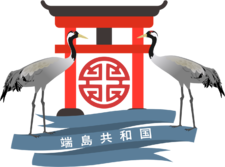 Hashima |
Planning areas
Bunam | Nishihira | Weipei | Kōtō Government President | Prime Minister | Cabinet | Parliament | Judiciary Political Parties Culture Languages | History | Arts | Literature | Music | Symbols | Holidays | Ceremonies | Dance Media Hashima Broadcasting Corporation | The Morning Post Misc Hashima Armed Forces | National Anthem of Hashima | Coat of arms of Hashima | Flag of Hashima |
|---|


